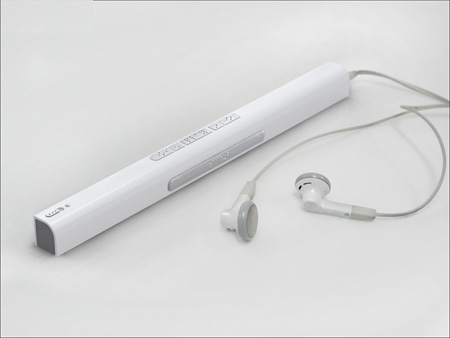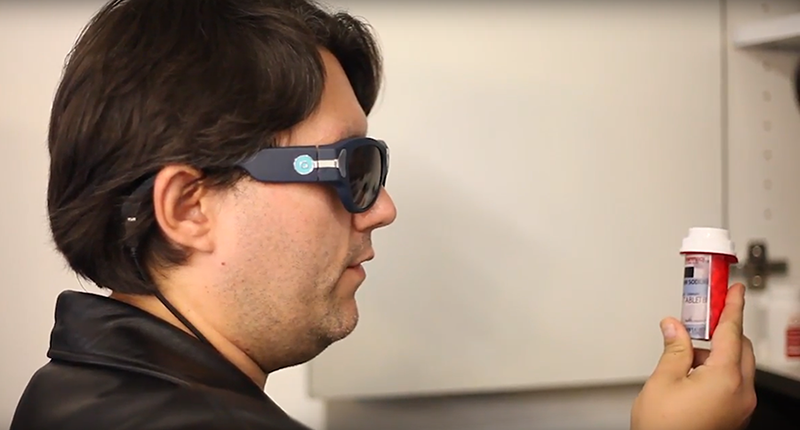Voice-Activated Assistive Devices: Supporting the Visually Impaired
Voice-Activated Assistive Devices: Supporting the Visually Impaired
Blog Article
Empowering Independence With Assistive Innovation for the Blind
The integration of assistive modern technology into the lives of people with visual disabilities represents a significant innovation in promoting self-reliance and self-sufficiency. From ingenious display viewers to innovative smart walking sticks, these devices not only boost day-to-day navigating and interaction however likewise equip customers to engage meaningfully in various aspects of life. As we explore the myriad advantages and real-world applications of these innovations, it ends up being crucial to take a look at the underlying elements that add to their efficiency and the possibility for future advancements in this crucial field.
Introduction of Assistive Modern Technology

The development of assistive technology is based in concepts of inclusivity and empowerment. Technologies in software, equipment, and sensory enhancements supply individuals with alternatives tailored to their certain requirements. From screen viewers that convert text to speech, to responsive gadgets that communicate info with touch, these tools transform the means individuals engage with their surroundings.
In addition to functional applications, assistive modern technology cultivates higher social addition and involvement in various markets, consisting of education and work (Braille displays and notetakers). As research study and growth remain to advance, the capacity for assistive modern technology to further improve the lives of visually impaired individuals stays appealing, paving the means for a much more fair culture where everyone can prosper
Types of Assistive Devices
A selection of assistive gadgets have emerged to support people with aesthetic problems, each designed to fulfill particular demands and boost everyday performance. These devices range from low-tech remedies to state-of-the-art technologies, offering varied choices for customers.
Low-tech gadgets include magnifiers and large-print materials that aid in reading and writing. Braille devices, such as Braille styluses and slates, make it possible for responsive reading and communication. Orientation and movement help, like white walking sticks, assist users navigate their environment securely.
On the higher end of the spectrum, digital magnifying systems and screen readers offer considerable assistance. Digital magnifiers enable users to enlarge message and images on displays, while display visitors convert digital material right into manufactured speech, helping with access to information on smart devices and computers.
Smart device applications also play an important duty, supplying attributes like message acknowledgment and navigating assistance. Wearable innovation, such as smart glasses outfitted with increased truth, is arising as a promising device to improve situational understanding.
Benefits of Assistive Innovation
The integration of assistive technology substantially boosts the high quality of life for people with aesthetic impairments. These innovations empower customers by advertising self-reliance, enabling them to browse their environments better and do daily tasks with higher convenience. Display readers and magnifying software application allow individuals to gain access to digital info, promoting specialist and educational possibilities that might have previously been out of reach.
Additionally, assistive devices such as clever canes and general practitioners applications offer real-time navigation aid, improving mobility and safety. This raised autonomy not only improves self-confidence but likewise motivates social interaction, enabling individuals to get involved more totally in their neighborhoods.
Assistive innovation also helps with communication, special info aiding users get in touch with others via voice acknowledgment and text-to-speech applications. This capability is important for preserving connections and accessing vital details.
Furthermore, the personalization choices available with lots of assistive modern technologies guarantee that users can customize tools to their certain demands, even more boosting use and efficiency. In general, the benefits of assistive modern technology for individuals with aesthetic impairments are extensive, advertising a more inclusive culture where everyone can pursue their goals and aspirations.
Instance Research Studies and Success Stories
Highlighting the transformative effect of assistive innovation, various study show just how people with aesthetic impairments have actually successfully incorporated these devices right into their day-to-days live. One engaging instance includes a college pupil that made use of screen analysis software application to navigate online resources and scholastic materials properly. This modern technology not only facilitated her education and learning however likewise improved her confidence in taking part in conversations and group tasks.
An additional study includes a specialist who uses a smartphone application developed for navigating and object acknowledgment. By utilizing this app, he has actually reclaimed freedom in both his individual and work settings, enabling him to commute independently and involve with associates better.
In addition, a retiree shared her experience with braille e-readers, which enabled her to access a vast range of literary works and stay gotten in touch with her area with book clubs.
These success stories underscore the essential role of assistive modern technology in fostering freedom, improving lifestyle, and promoting social combination for individuals with visual impairments (Mobility aids for visually impaired users). By embracing these innovative devices, customers can overcome challenges and confiscate opportunities that add to their specialist and individual satisfaction

Future Fads in Assistive Innovation
Technology in assistive innovation is poised to redefine the landscape of support for people with aesthetic problems. Arising fads highlight the integration of fabricated intelligence (AI) and artificial intelligence, which improve the capability of devices that assist with navigation and info access. AI-driven applications are currently qualified of analyzing visual data in real-time, making visit homepage it possible for individuals to involve with their environment a lot more independently.
Moreover, the advancement of wearable innovation is advancing quickly. Smart glasses furnished with enhanced truth (AR) can offer audio summaries of environments, transforming exactly how users communicate with public rooms. These devices not just promote freedom but additionally foster social inclusion.
Furthermore, the Internet of Points (IoT) is making homes smarter, enabling for smooth connectivity in between everyday devices and assistive gadgets. This connection encourages users by enabling automated feedbacks and voice-activated controls customized to specific demands.
Conclusion
Finally, assistive innovation plays a crucial duty in equipping individuals with aesthetic impairments by improving their freedom and engagement with their surroundings. The varied series of devices and applications readily available not just assists in navigation and interaction yet also advertises social combination and opportunities for professional and personal development. As innovations proceed in this area, the capacity for improving the lifestyle for those with aesthetic impairments will increase, cultivating better freedom and empowerment.

Report this page